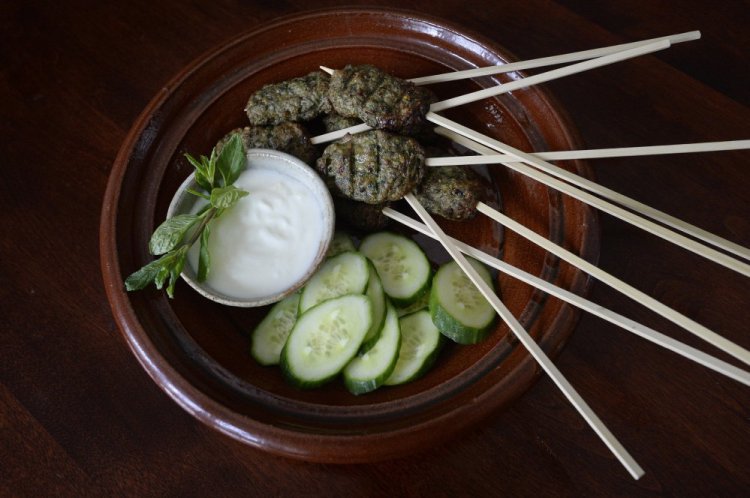Understanding how food choices have an impact on the process of global warming is an up and down proposition.
As for up, you can recognize how the production of the foods you eat releases more or less greenhouse gases into the atmosphere. You can make carbon emission-sensitive decisions like buying local broccoli instead of bunches trucked in from California; choosing products with little or no plastic packaging; cutting down on the amount of industrially raised beef, lamb and pork you eat; or taking your bike to the market instead of your car.
But you’ve also got to comprehend how our eating choices can help pull more carbon out of the air and sequester it in the soil, where it can nourish a busy underground world called the “soil food web.” Healthy soil includes a dizzying array of organisms that feed off each other. They range in size from tiny one-celled bacteria and protozoa to more complex nematodes and micro-arthropods and finally to the earthworms, insects and root systems visible to the naked eye. Trees and plants use only 40 to 60 percent of the sugars they produce through photosynthesis, the process by which plants breathe in carbon dioxide and use sunlight and water to make their own carbs.

Lamb, spinach and pistachio kofta being prepared. Staff photo by Shawn Patrick Ouellette
“The remaining 40 to 60 percent goes into feeding biologically active soil. And this vast underground economy, if we take care of it well, can help pull more carbon from the atmosphere to be put to good use underground,” explains Lisa Fernandes, executive director of The Resilience Hub, a Portland-based nonprofit group promoting permaculture and edible landscape design.
The easy answer is to plant more green things that pull carbon dioxide from the atmosphere and push carbon-based food into the soil. It’s more complicated if you buy most of your food because how can you know whether it was grown in ways that support the thriving underground economy?
According to a 2014 paper published by the Rodale Institute, “Regenerative Organic Agriculture and Climate Change: A Down-to-Earth Solution to Global Warming,” decreasing tillage when sowing (in other words, turning the soil less), planting cover crops in dormant fields, practicing heavy-duty crop rotation in active ones and using lots of compost all can help sink carbon dioxide into the soil. The paper, which reviews these practices over decades, said that widespread adoption of “on-farm soil carbon sequestration can potentially sequester all of our current annual global greenhouse gas emissions.”

Christine Burns Rudalevige adds egg to the a blender with ingredients to make lamb, spinach and pistachio kofta. Staff photo by Shawn Patrick Ouellette
OK, so now we know what farmers have to do, but as eaters, what is our role? First, buy from local farmers who follow these practices. Second, try to eat well-pastured proteins (See Lamb, Spinach and Pistachio Kofta recipe). Fernandes says a growing body of scientific evidence indicates that rotational grazing – where animals are allowed to stand on a piece of pasture only long enough to nibble the tops of the grasses as opposed to chomping to bare ground – stimulates underground root growth and leaves behind a bit of manure to enrich the soil.
Fernandes also advises both eaters and growers to turn to perennial plants because the soil substrate is not disturbed to produce them year after year. Recurring springtime darlings like asparagus, fiddleheads, ramps and rhubarb will do, for sure. She says concerned gardeners also can foster lovage and sorrel and perennial varieties of celery and spinach, while adventurous eaters can tuck into hosta shoots and Japanese knotweed (a nasty invasive) if found in open areas set back from the road. Last, Fernandes tells folks to turn to fruit- and nut-bearing trees for both landscaping and food. They are the ultimate carbon-sinking mechanisms.
Christine Burns Rudalevige is a food writer, a recipe developer and tester and a cooking teacher in Brunswick, and the author of “Green Plate Special” (Islandport Press, May 2017). Contact her at: cburns1227@gmail.com.

Ingredients for lamb, spinach and pistachio kofta. Staff photo by Shawn Patrick Ouellette
LAMB, SPINACH AND PISTACHIO KOFTA
Koftas are a family of meatballs served in Middle Eastern, Balkan, and South and Central Asian cuisine. Given the geographic range, no surprise there are many recipes with different meats, fillers, herbs and spices. This recipe highlights how protein (pastured lamb), vegetable (perennial spinach) and nut (pistachios) can be reared in such a manner as to help fix carbon dioxide from the air, where it sits as a greenhouse gas, into the soil where is can be used to keep an underground biological economy thriving. I serve them with sliced cucumbers and yogurt for dipping.
Makes 15 koftas
12 ounces local pastured ground lamb
1 egg
1 small onion, minced
1/2 cup fresh bread crumbs
1/2 cup cooked, drained and chopped spinach
1/4 cup chopped cilantro
1/4 cup finely chopped pistachios
2 tablespoons chopped mint
2 garlic cloves, crushed
1-3 teaspoons harissa
1 tablespoon lemon zest
1 teaspoon toasted ground cumin seed
1 teaspoon toasted ground coriander seeds
1 teaspoon kosher salt
15 short wooden skewers, optional
Preheat the oven to 400 degrees F. Place a cooling rack inside a rimmed baking sheet and set aside.
Place all of the ingredients (except for the skewers) in the bowl of a food processor and combine until fairly smooth, about 30 seconds.
Take 2 tablespoons of the mixture and use your hands to form it into an oblong shape. Place the kofta on the baking rack. Repeat until you have formed all of the mixture into kofta. Place the pan into preheated oven and cook until the kofta are browned on the outside and cooked through, 20-25 minutes. If using, insert a skewer through each kofta for easy pickings. Serve warm.
Send questions/comments to the editors.



Comments are no longer available on this story